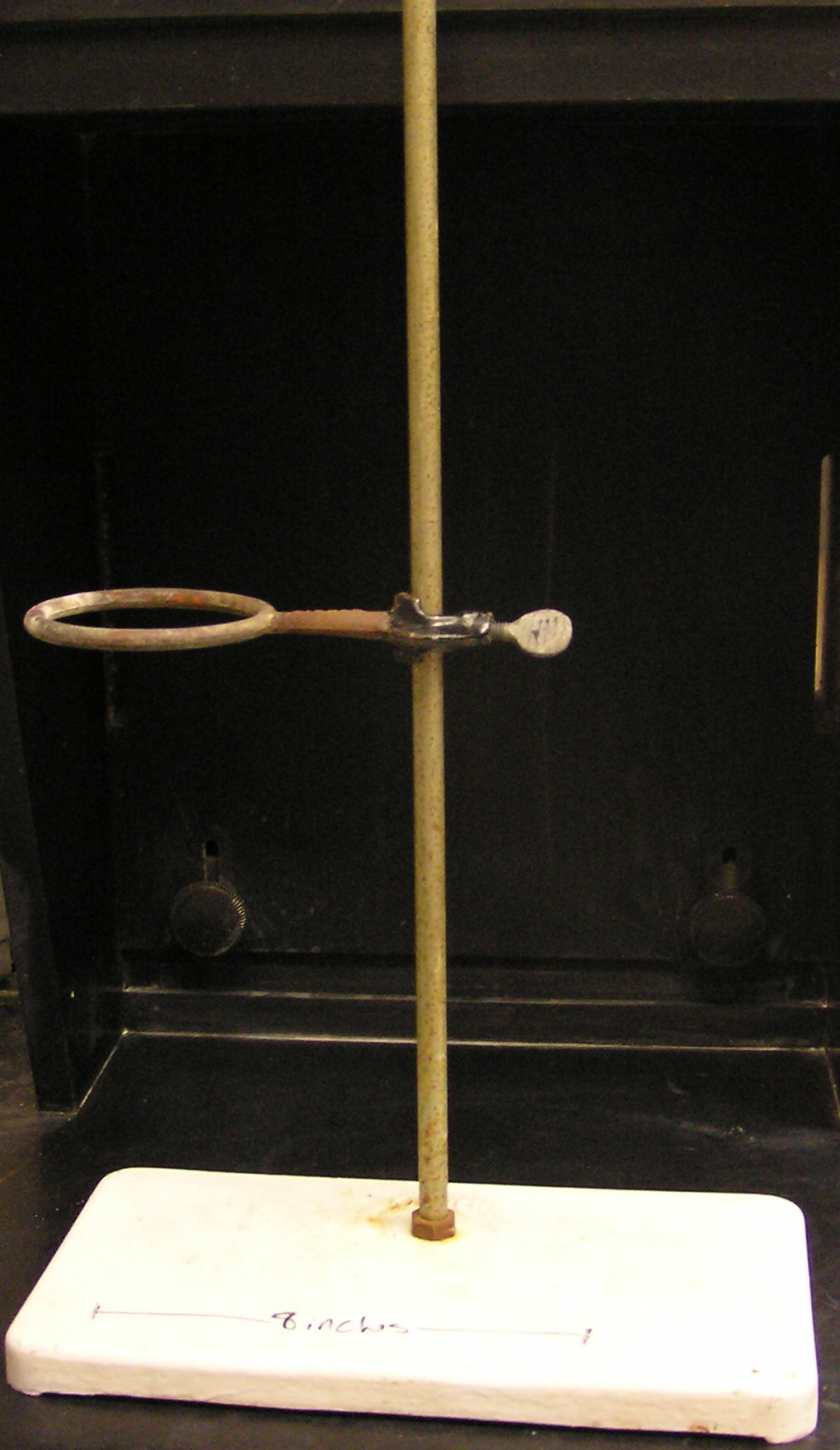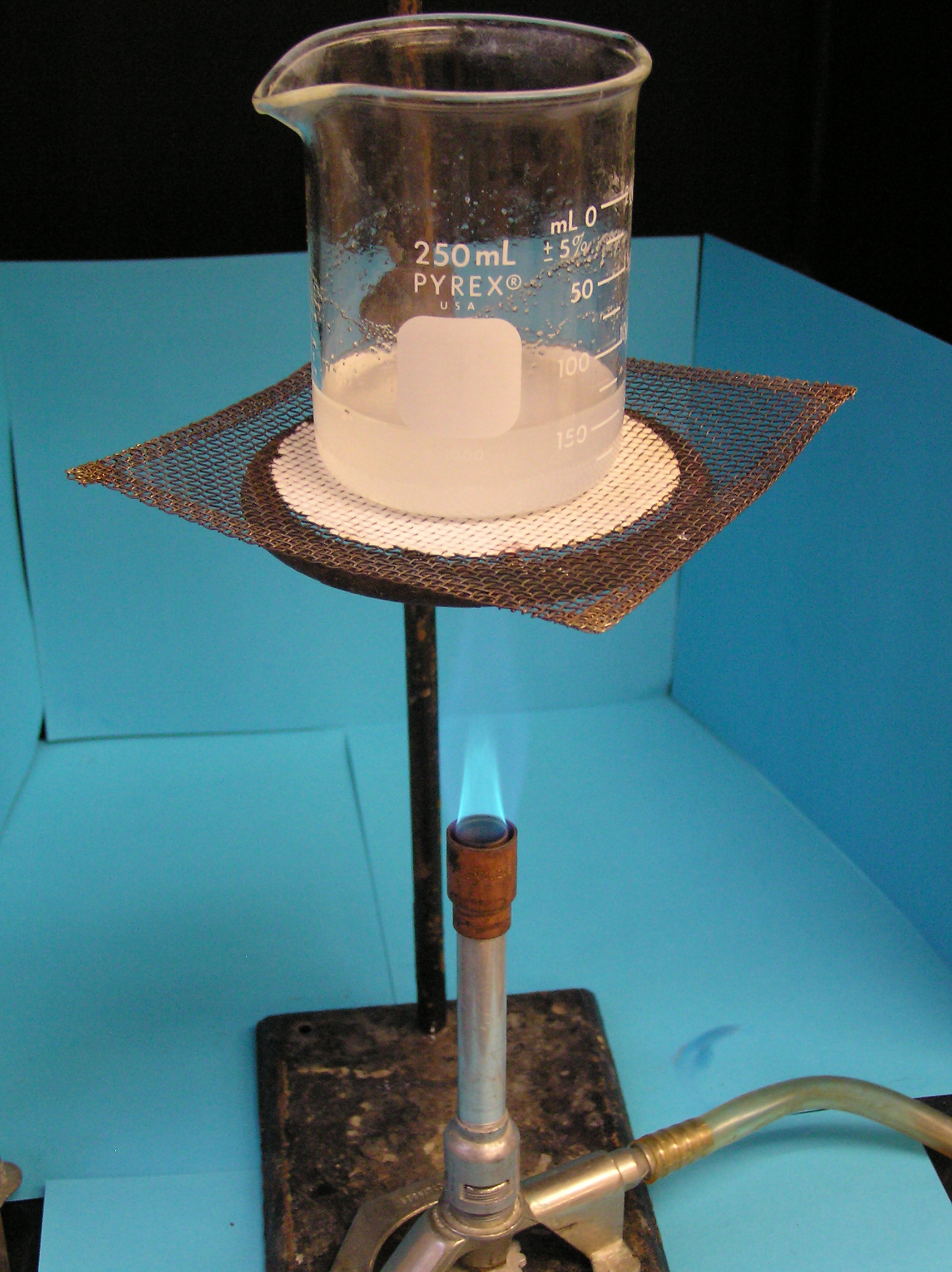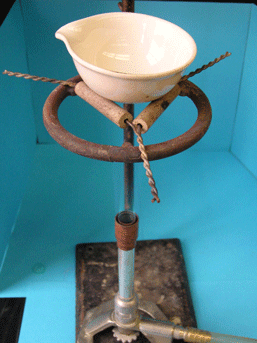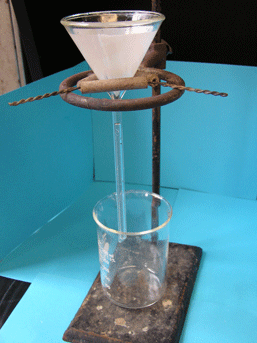
Ring Stand:

This is the basic stand and ring secured to the pole by way of a screw that secures it to the stand at the back. Ring stands are typically used in several ways to aid in common laboratory operations.
Heating:
Ring stands are routinely employed for heating operations in the laboratory along with Bunsen burners.


The two images show two different ways in which ring stands can be used to set up sturdy arrangements for heating samples:
Indirect Heating:
When heating glass ware in operations like boiling, reduction of solvent, and conducting chemical reactions, indirect heating is mandatory to prevent shattering beakers, Erlenmeyer flasks, and test tubes. This is also the method for creating a heating bath.
The set up requires a ring stand, ring, and Bunsen burner. The beaker or flask to be heated is placed on top of a wire heating mesh with a heat resistant pad that evenly distributes the heat along the entire surface of the bottom of the glass, and prevents direct contact with the flame.
Direct Heating:
The second common way to use the heating stand for heating samples is to use the flame directly. This should only be done with a crucible, evaporating dish, or special Pyrex, glassware. Failure to observe this will result in glassware being shattered.
This set up requires the ring stand, ring, and Bunsen burner. Additionally, in the image shown above, it requires an evaporating dish and clay triangle with flame of the Bunsen burner being applied directly.
Filtration:
Another use for a ring stand is to act as a funnel holder during filtration.

Filtration set up using ring stand